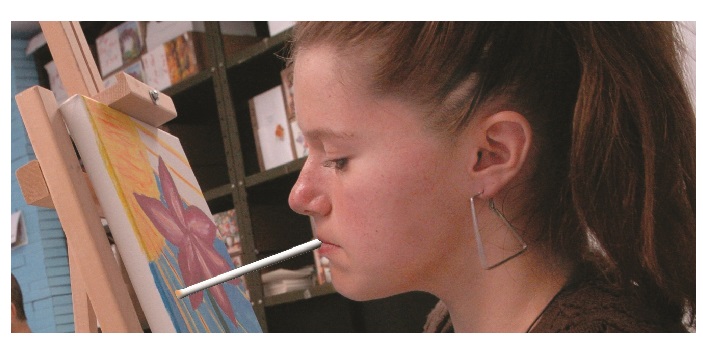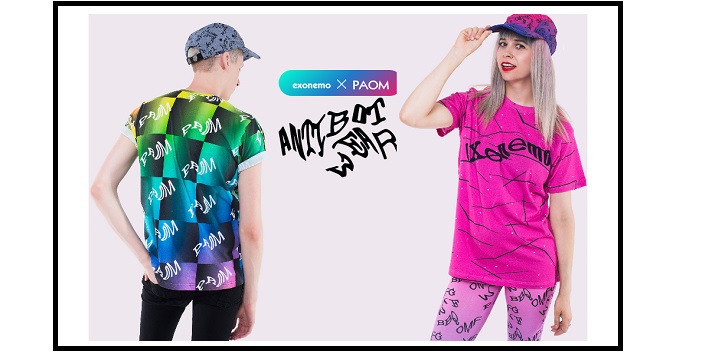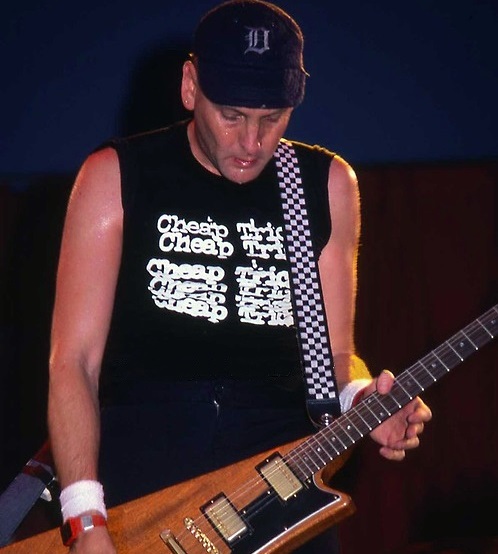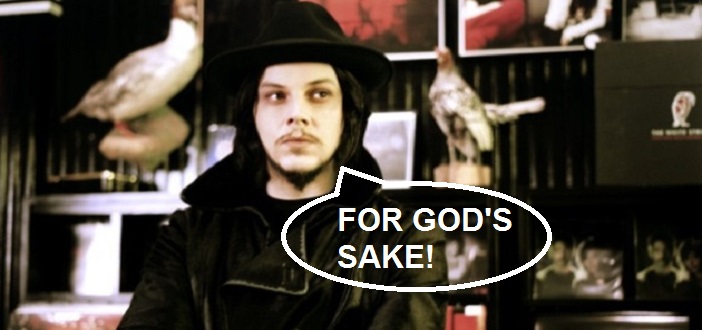Claudia is drawn to regions which are borderlands, geographically and psychologically and have been rendered throughout history by artists. Her work is process driven and deeply shaped by its relationship to daily life, a passion for history and art made by women.
Claudia talks about her process; ‘When I get going, there is a certain energy, and impulse within me and picking up from the residues of leftovers from previous sessions, remnants that I have been living with since. One of the main ingredients that informs my decisions seems to be reacting to impulse to distil [UK spelling. US spelling ‘distill’] and repair something. Even though I don’t know what that is.’ (From Obscure Secure, exhibition catalogue, in conversation with Hayley Field and Jacqueline Utley, 2014.)
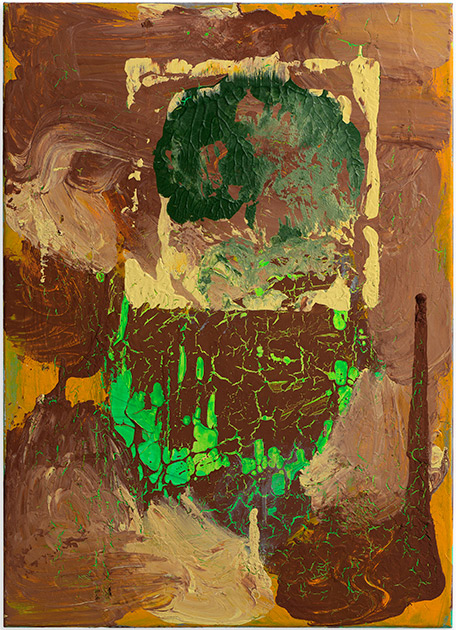
CBP: Your abstract paintings feel like individual identities, each with an independent relationship with you, rather than products of a series. Can you introduce something about your approach to painting?
Claudia Böse: I very much like your first paragraph as nobody ever pointed this out to me. It is kind of obvious to me that each painting is very separate from the others and never part of a series.
I never know what I am going to paint. Painting is bigger than me.
When I start to get into the painting it is out of this world and right in it too.
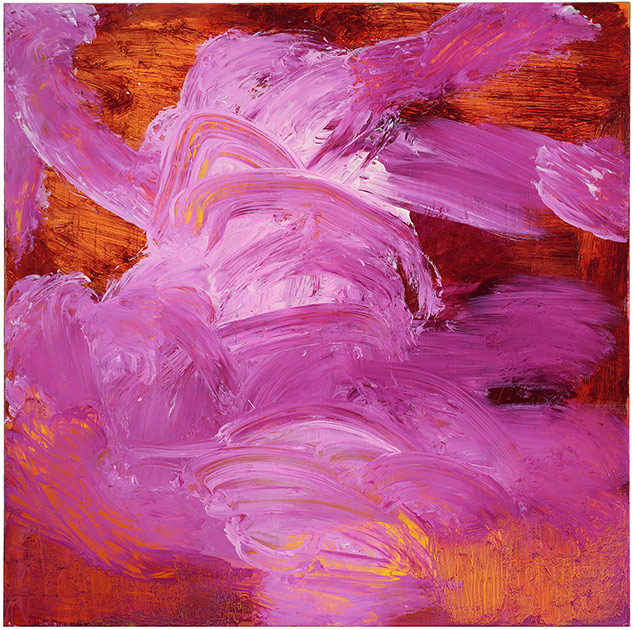
CBP: Describe a typical starting point for one of your paintings?
CB: I get paints, brushes, palette knives, plenty of time, rags, and quiet space. I sit for quite a long time just looking and listening. I am waiting to start. I begin at some moment and that is it. I am on auto pilot. Sometimes there are older panels in the studio which I might also work on. I might just give one painting one coat of new colour or scrape off the middle of an older work. Anything can happen.
For the past 10 years I painted in this Church on the second floor. Our allotment is also near. During Covid I had this place for two years to myself which was an amazing experience. When do we get any thing like this as a painter? I wonder this might also be the only time I have ever sold so many paintings. There was a special integrity at work for a short time and has not happened again.
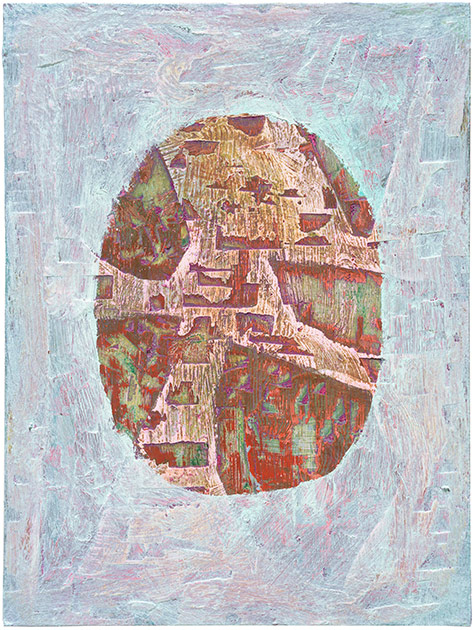
CBP: Erasure and removing paint is a fundamental process of yours and other painters. Can you talk more about scraping away?
CB: Scraping away and moving paint, it is not about the surface only I think about, but as important is the below and next to it and underneath it, with its own structure and beauty and rules – on one level it is not decorative, there is a reason, giving it space also to its own being. I am German and British, but too much to get into it here.
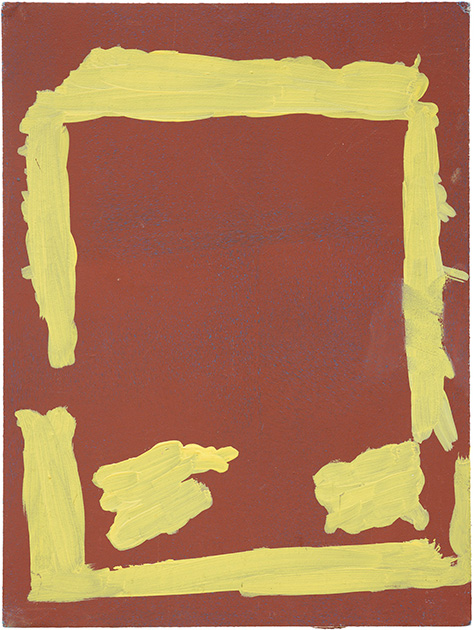
CBP: You discuss your pull to borderless regions that have been interpreted throughout history by artists and writers. This is a very evocative connection between the feeling, process and scholarly to paint research. Could you talk about this connection in more detail?
CB: Perhaps this is something painters do to find out about visual existence and expression of finality. I moved for three years to the island of Ruegen where Caspar David Friedrich lived and worked. I moved there to see with my own eyes what he saw and painted then. Constable and Sebald interest me for similar reasons.
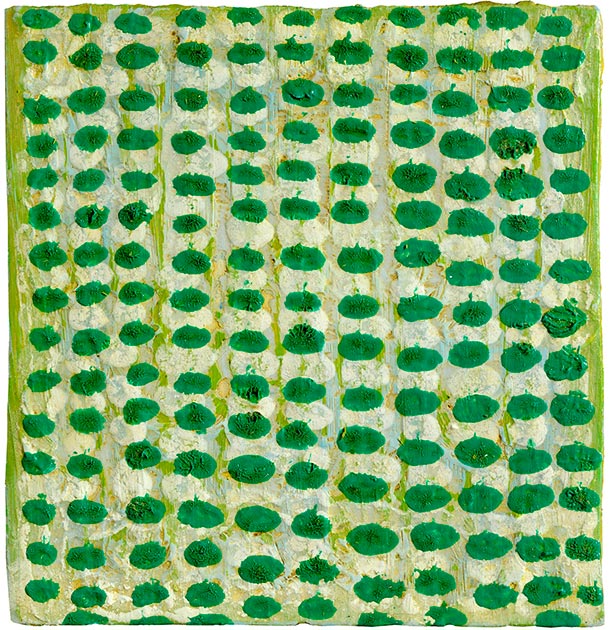
CBP: You’ve talked in past articles about decisions about when and how you use paint are strongly guided by your empathy for work which has been created by other women painters. Is this through mark making appropriations or another type of approach and sensibility? Has this changed for you more recently?
CB: This is a very different question now. Things have changed and come to an end in Europe. Women and men are equal. It will take time and all will get used to it. For six years I was part of Obscure Secure1 and we were not sure if change will really come. I am so glad that things have changed forever.
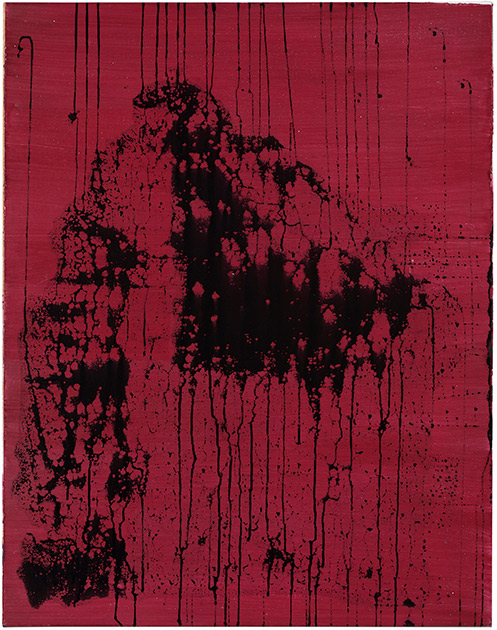
CBP: Can you talk about how you work with colour to build mood and space in your painting?
CB: This question is amazing for all painters. There are growing moods supported by colours we use in a personal way. I have always painted with the same ambition, origin and style and mood. I also always use in painting white, yellow, earth colours and pink to have a presence. There are so many different colours of each. I wonder how many colours I touch in my life?
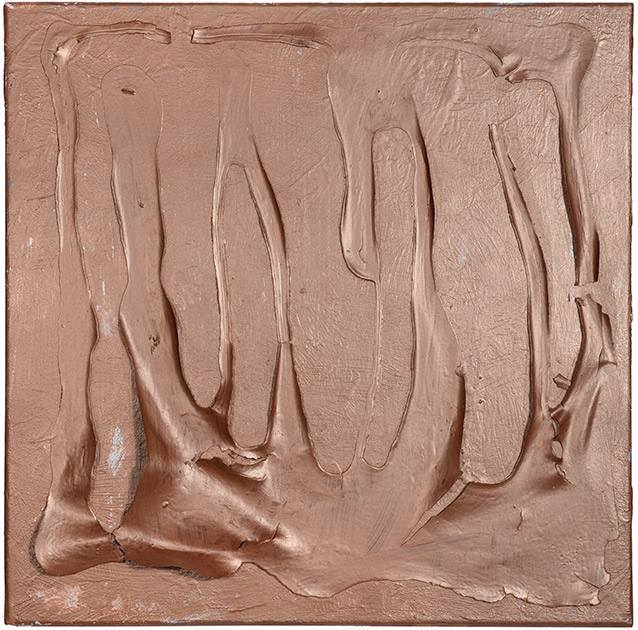
CBP: How prolific are you as a painter in terms of routine and successful completion of works verses the abandonment of paintings?
CB: I am aware how few phases I have left to paint in my life. This is a very interesting time. I recently started getting rid of art things I really won’t need anymore. New things will come too, I am sure.
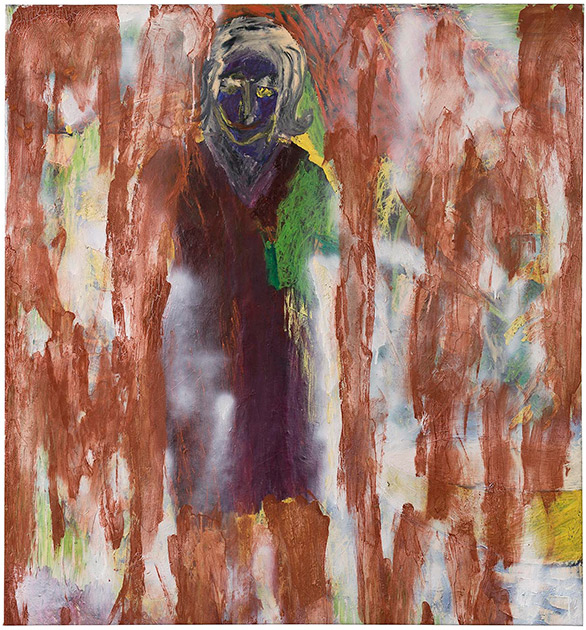
CBP: What are you working on right now?
CB: I am painting new work. I am also getting my studio open for September.
1. Obscure Secure is an artist-led collaborative project focusing on work by 20thc women artists, initiated in 2013 by Claudia Böse, Hayley Field and Jacqueline Utley with a practice based research exploring the visibility of women artists in collections. The name Obscure Secure was taken from one of The Hawstead Panels at Christchurch Mansion, most available writing about the panels say they were probably painted by Lady Drury in 1610. The panel ‘Obscure Secure’ has an image of a bear in a cave with the text beneath it. We decided to use this title because the words and image resonated with working with collections, where work is often hidden but kept safe.
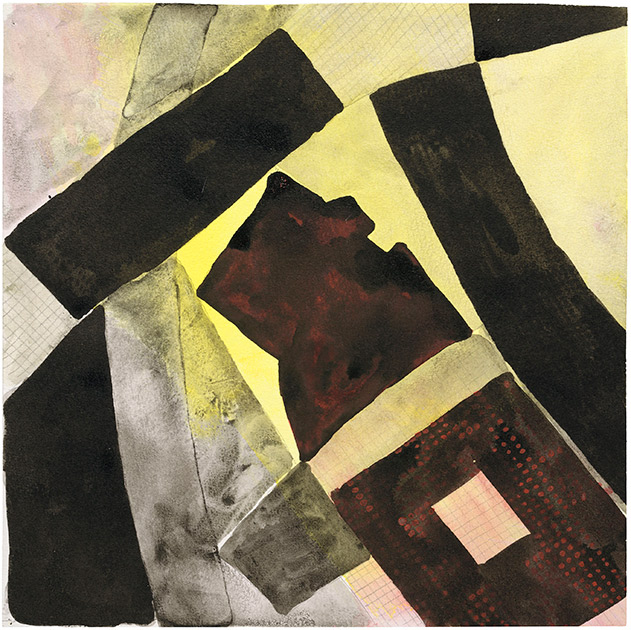
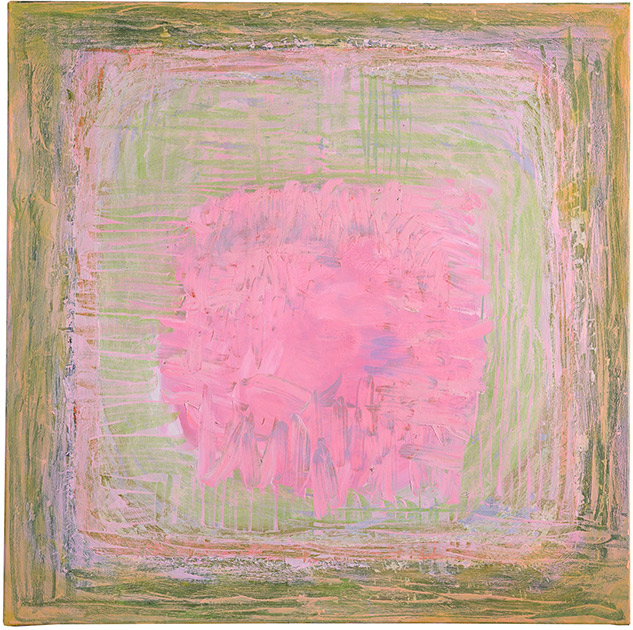
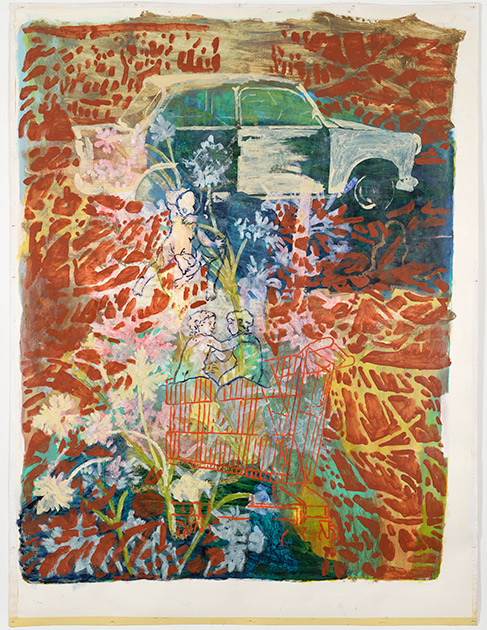
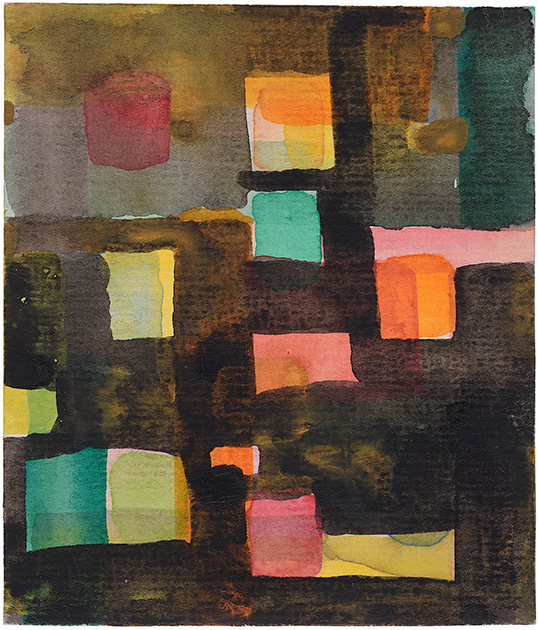
Claudia Böse was born in Nueremberg, Germany in 1963 and trained at Central St. Martins and the Royal Academy Schools in London. Her awards include the International Bursary, Arts Council Ireland and the Travel Grant, European Cultural Foundation for residencies in Ireland and Poland. She was also the recipient of the Something useful project in India as well as being a collaborative artist of ‘Obscure Secure’, a project supported by the Arts Council England. Her paintings have been exhibited England, Ireland, Germany, Poland, Spain, Florida and India. She is working in a church tower and has been based in Suffolk since 2002.
Recent exhibitions include: 2024; Slow Painting, Contemporary British Painting & Guests, Studio KIND at the Cornstore & The Plough Arts Centre, Exeter, 2022-3; Animal, Vegetable, Mineral, Saxmundham, Suffolk, 2022; Wells Art Contemporary, Vitalistic Fantasies, Elysium, Swansea, Paradoxes, Contemporary British Painting, Isle of Wight, Quay Arts Centre, A Generous Space, Hastings Contemporary.
Featured image- Bathroom by Claudia Böse. Watercolour, spray paint and acrylic paint.
Supplemental- A kinship of process. British-Canadian artist Jarrod Barker’s “Some Assembly Required” 2024. Acrylics.
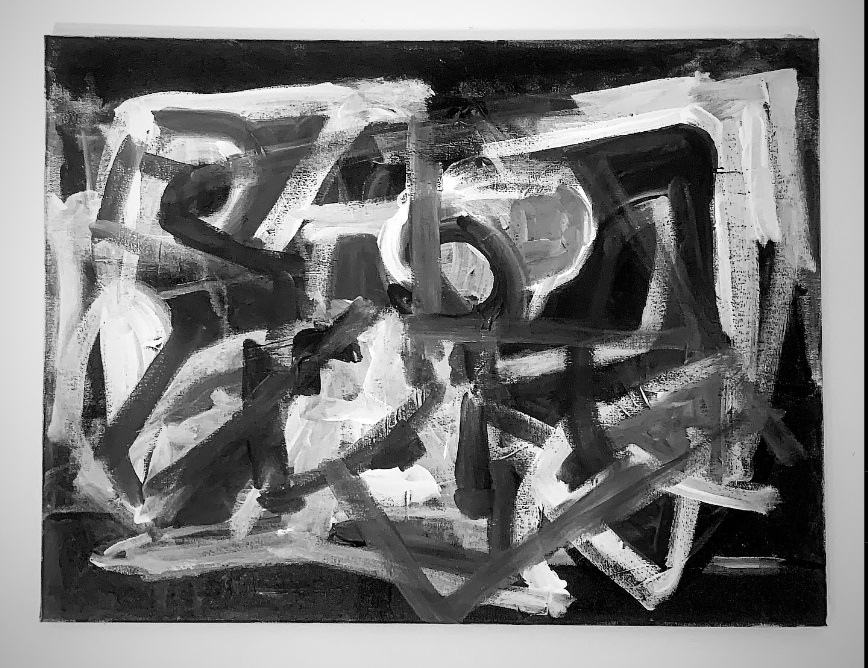

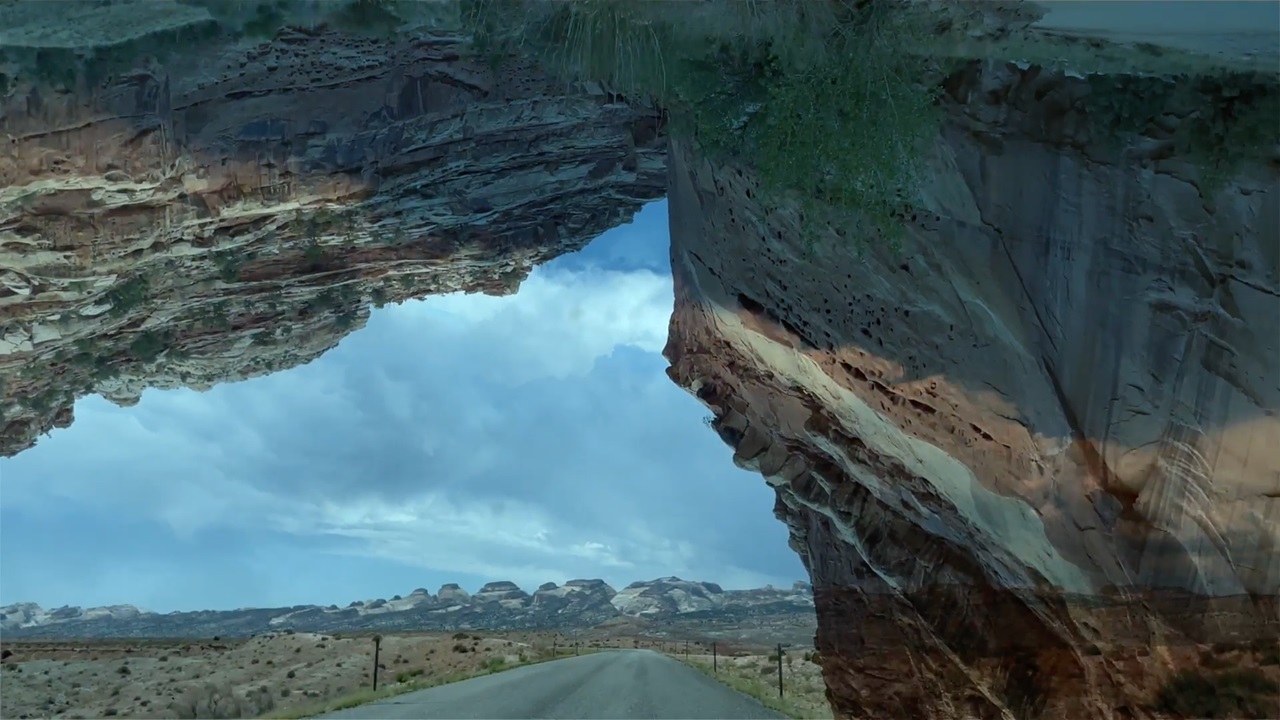




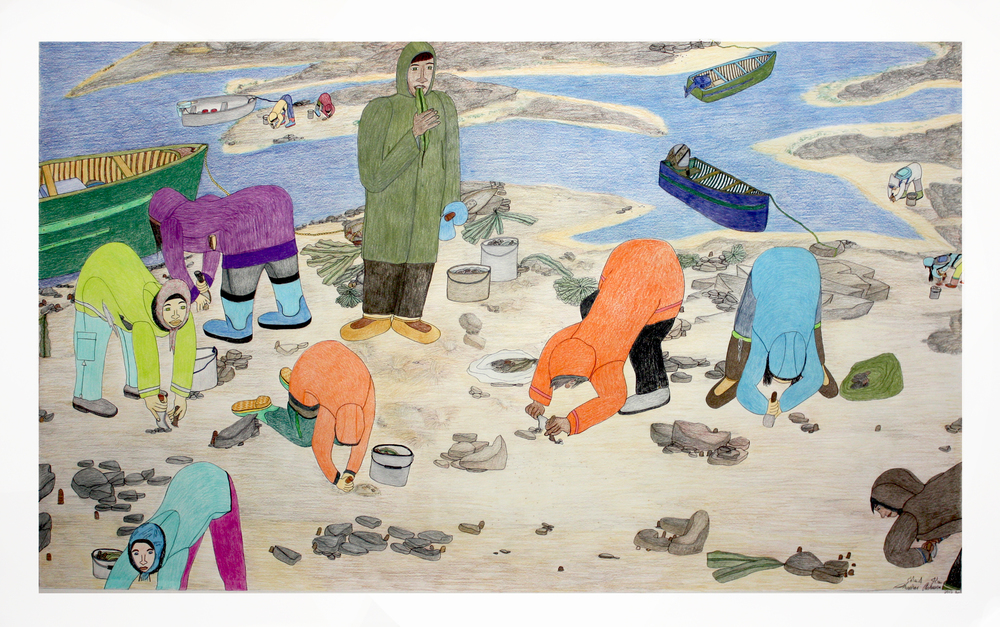


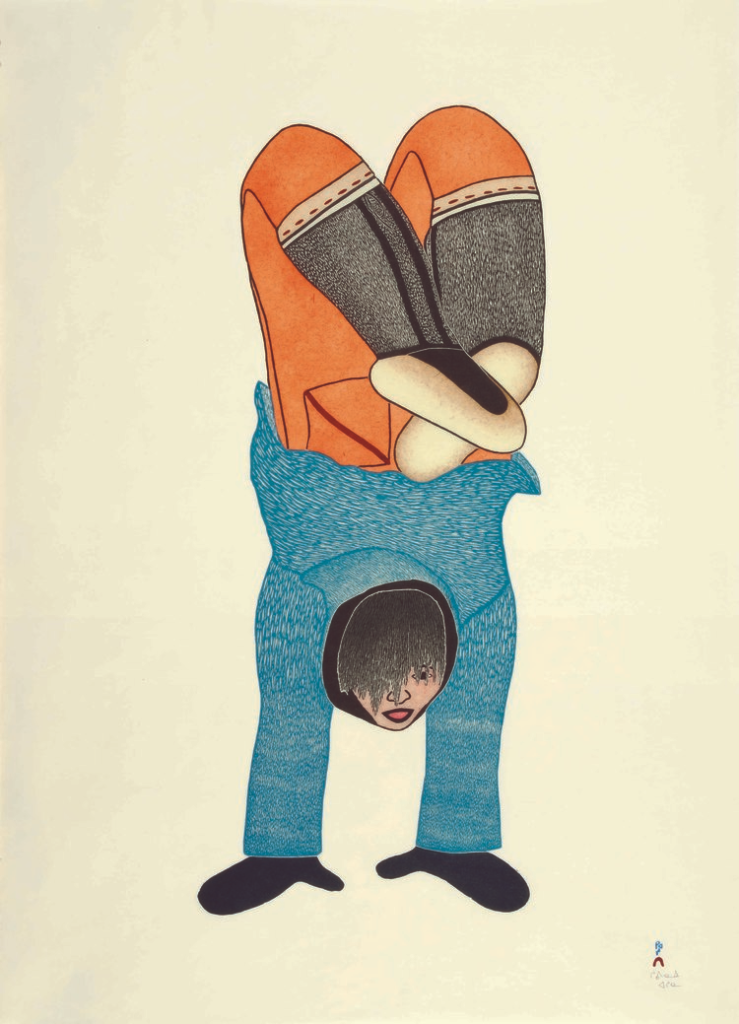



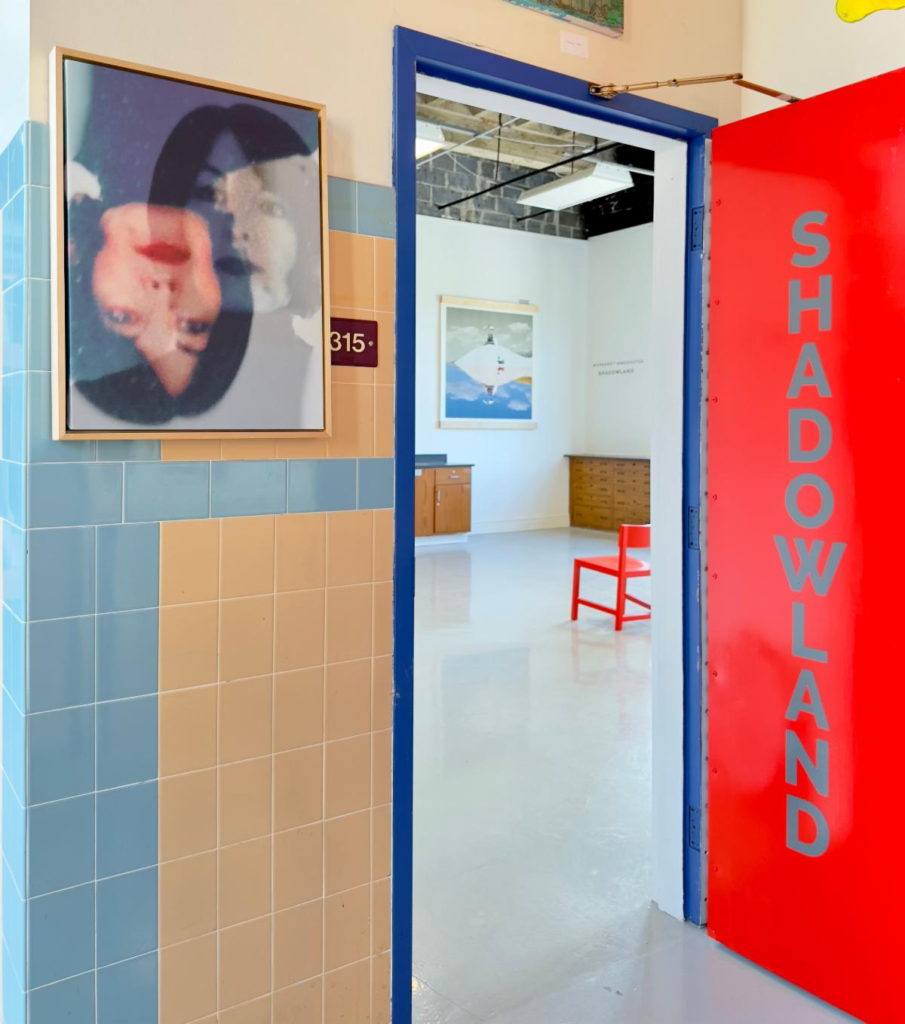
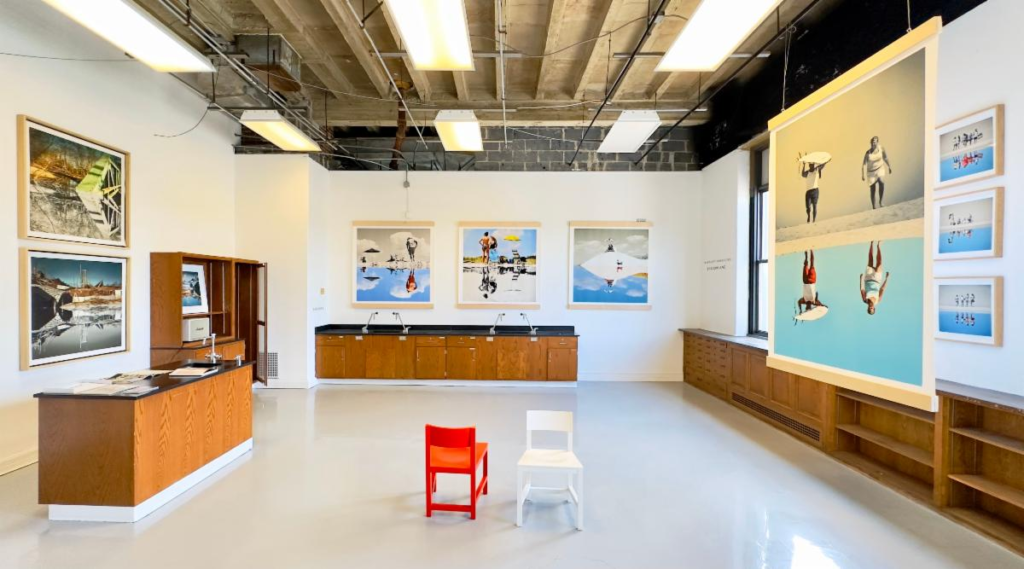
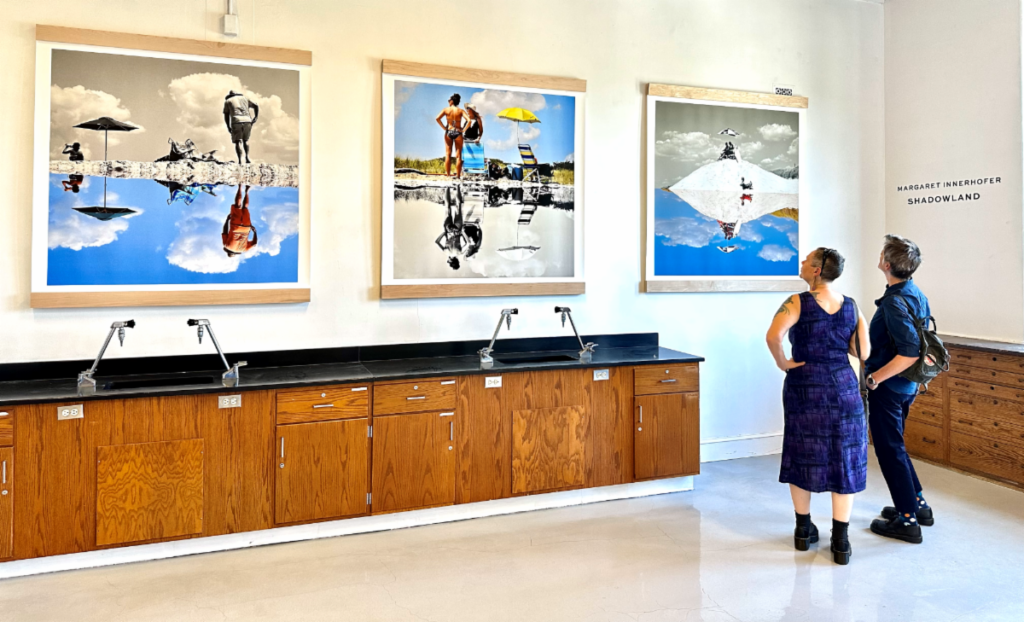



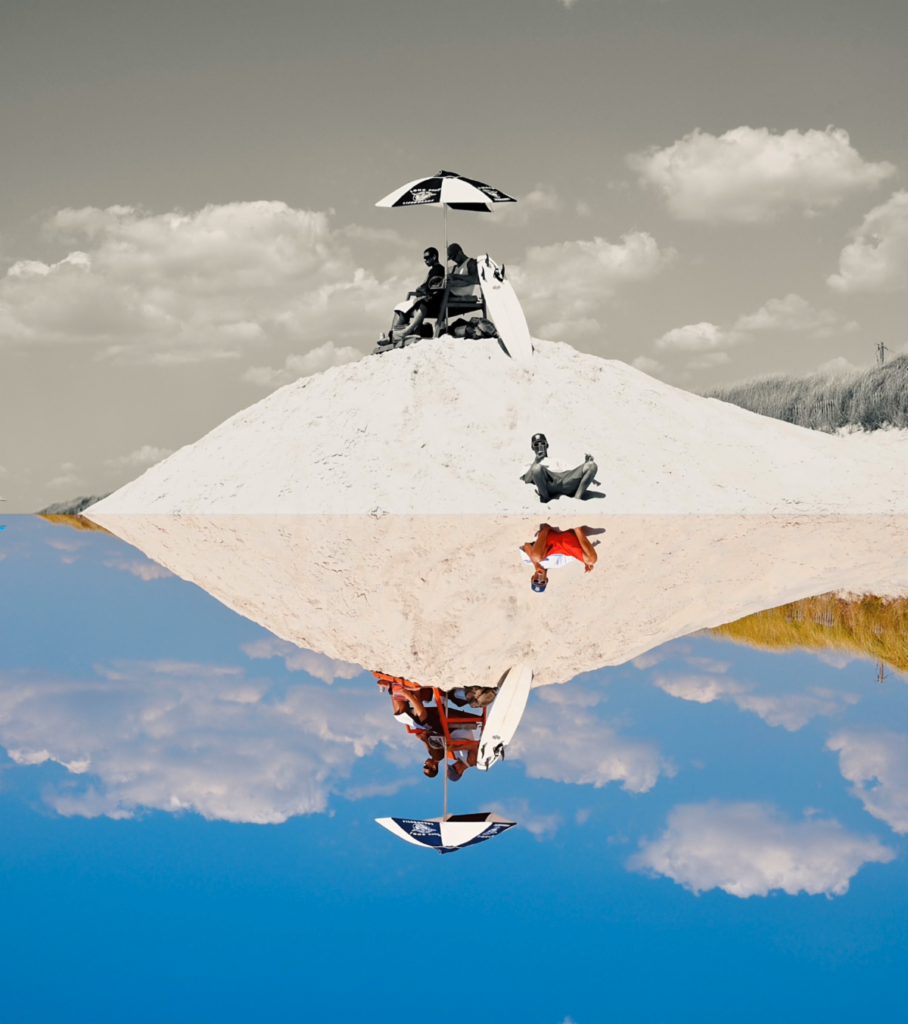

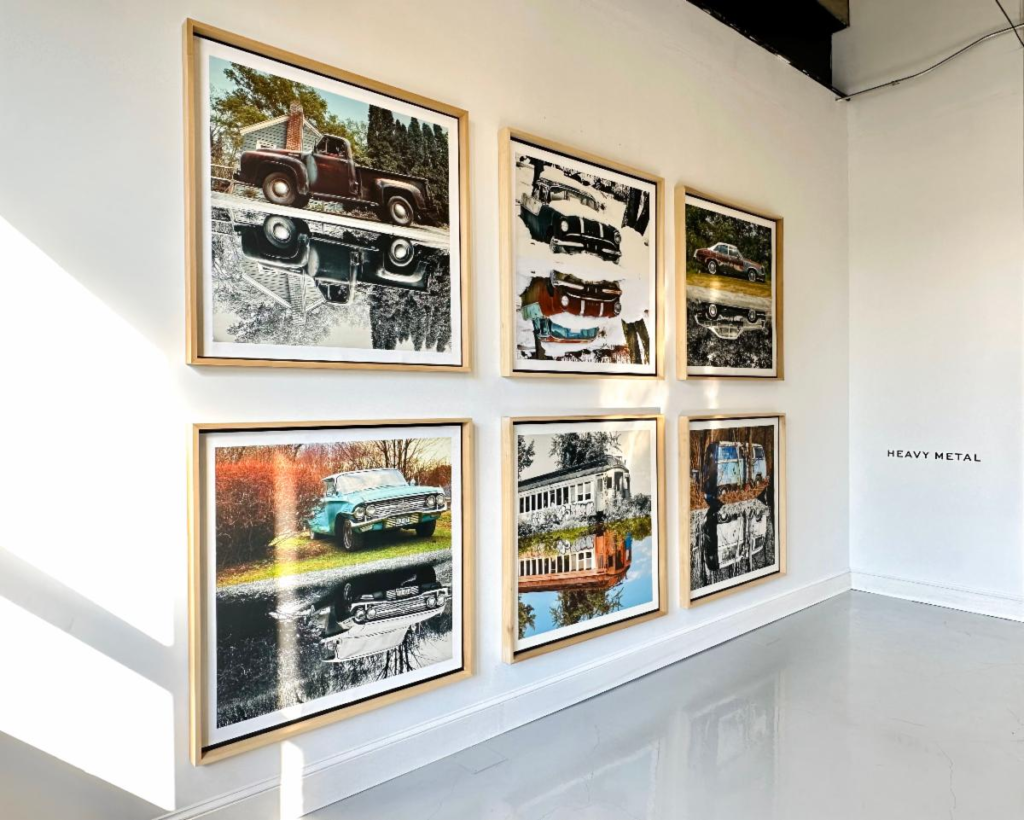



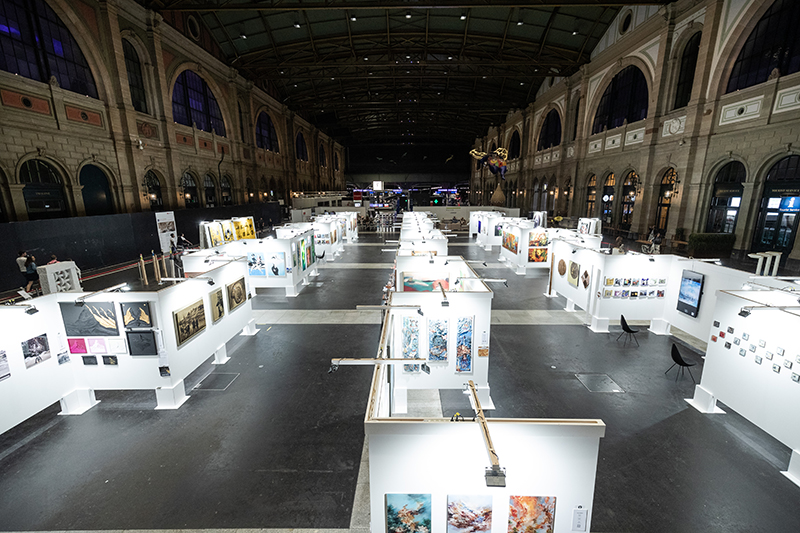
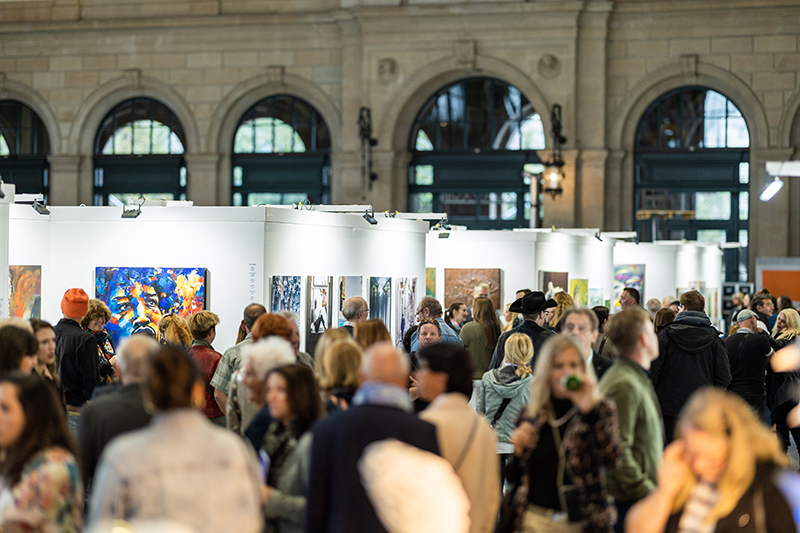
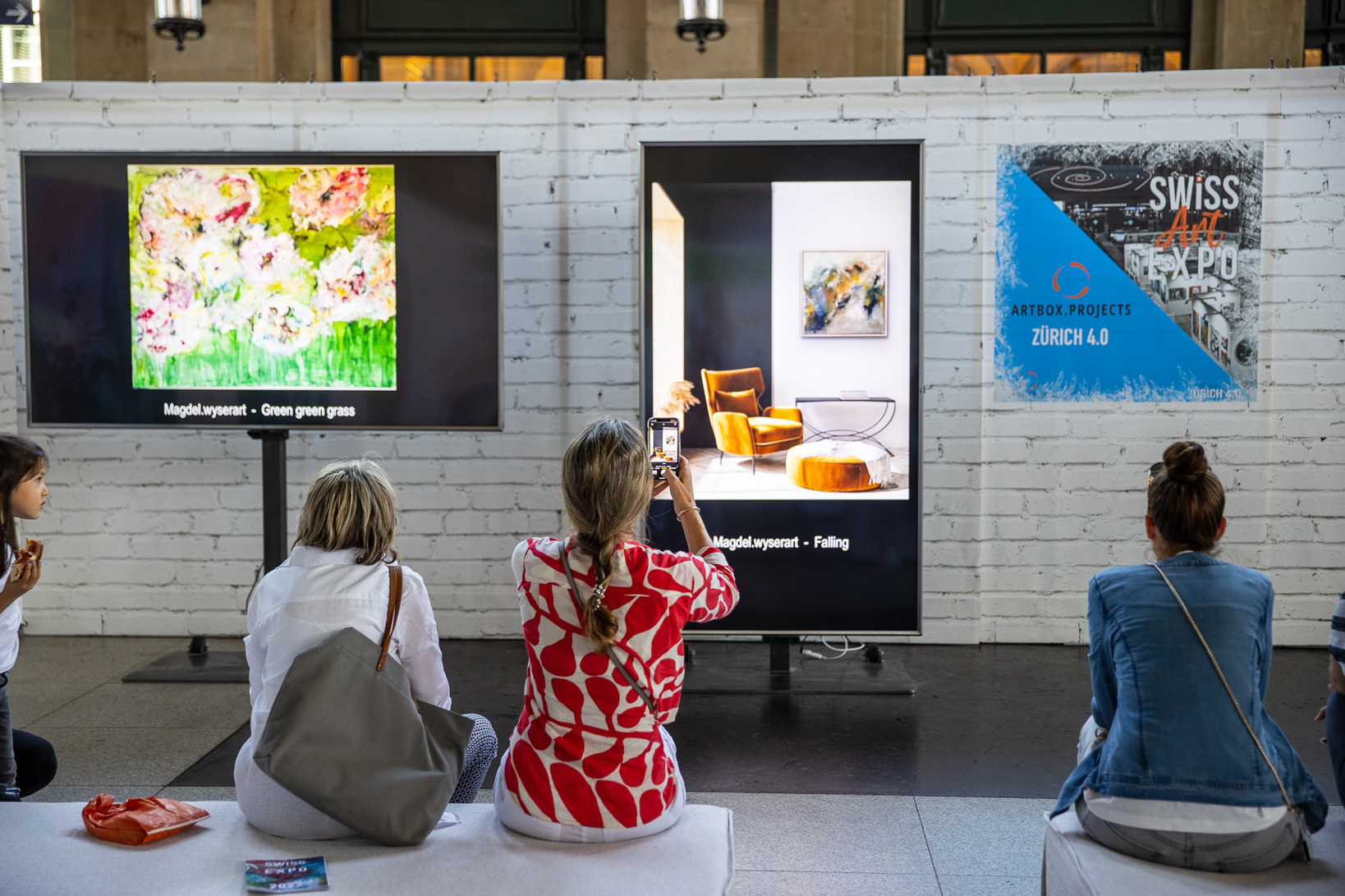
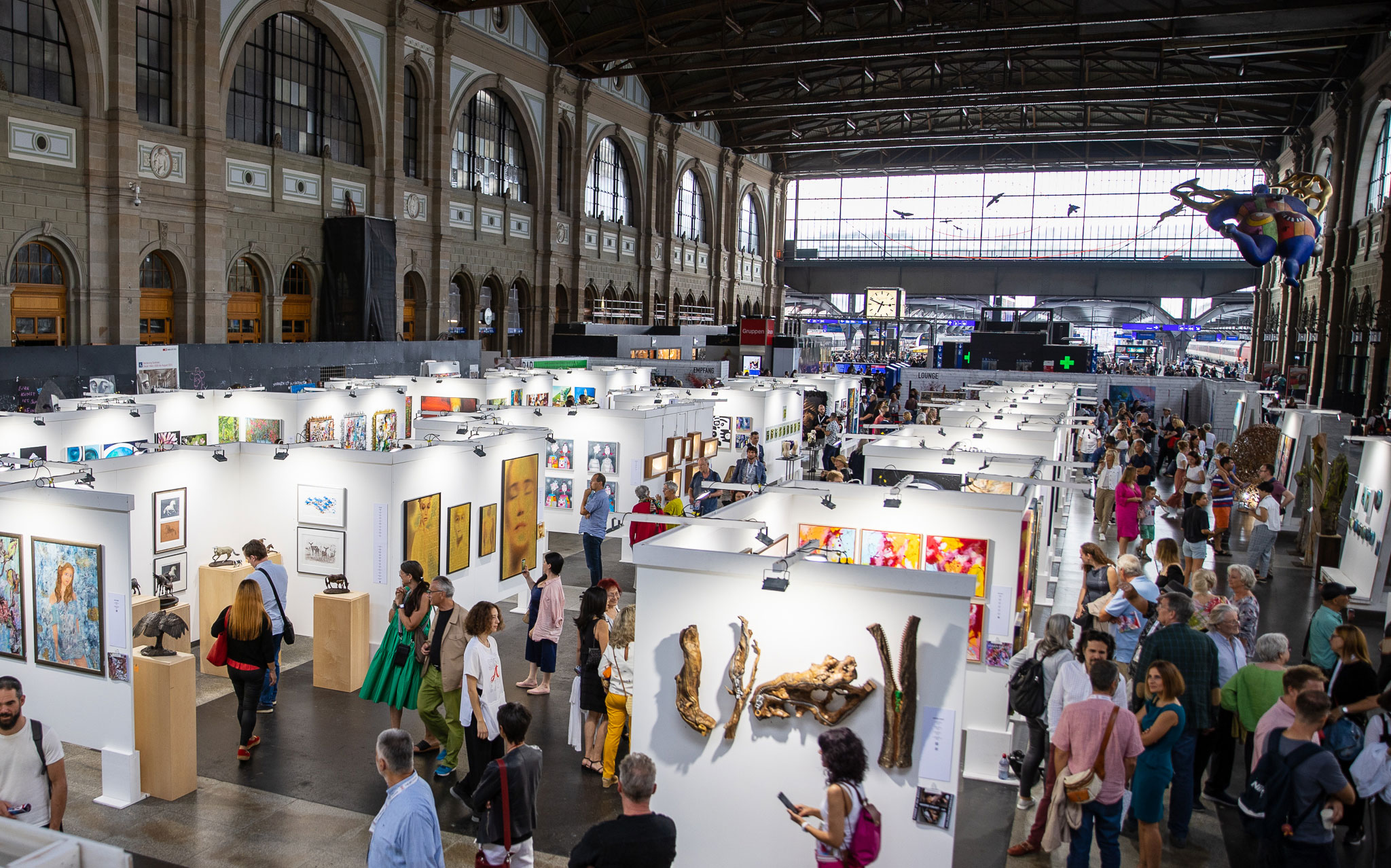
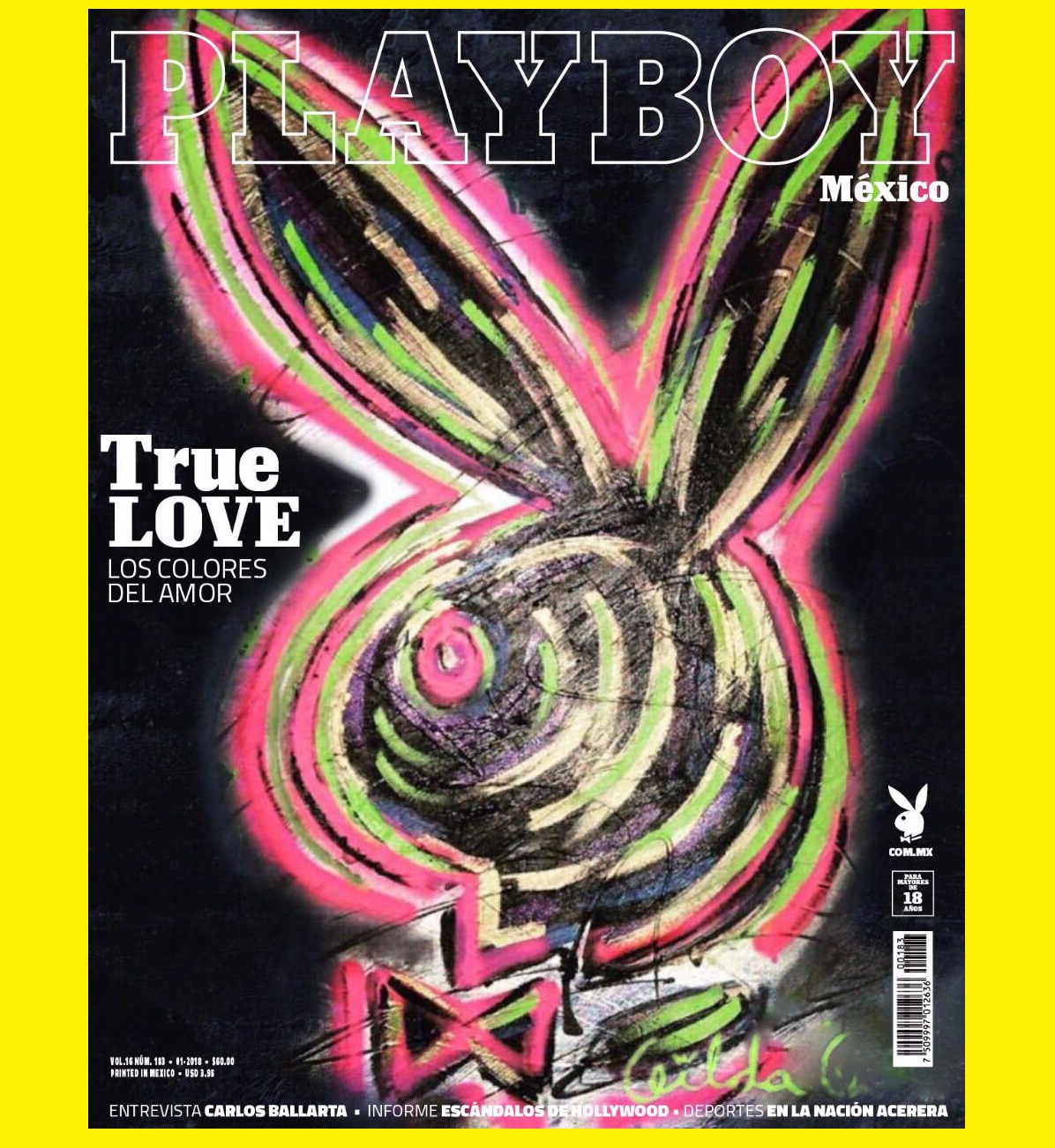
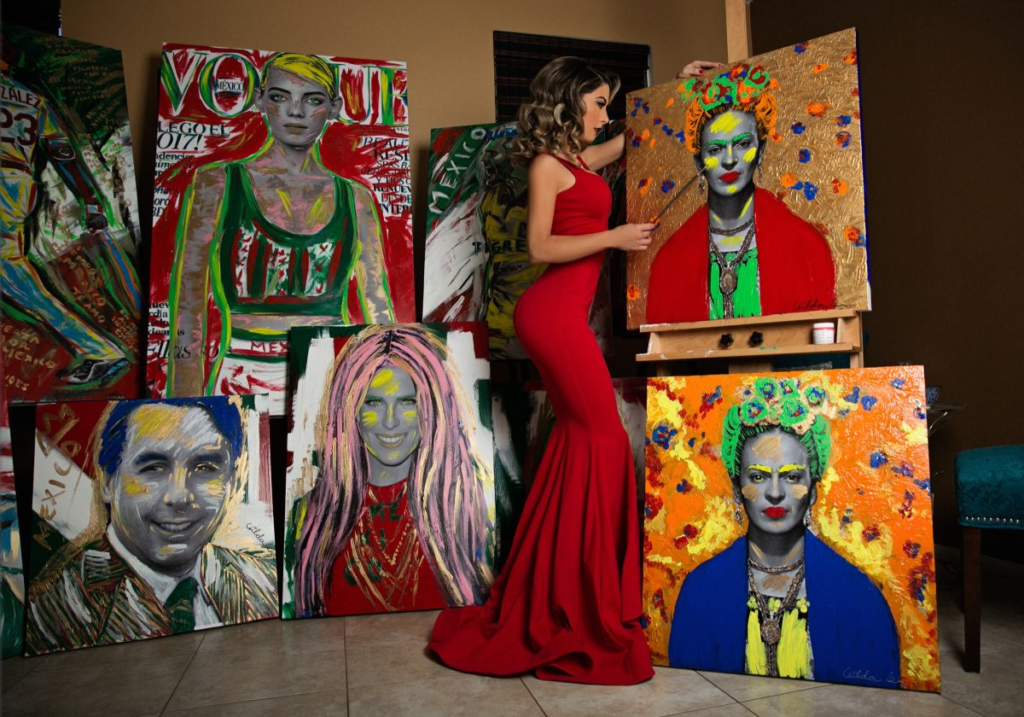
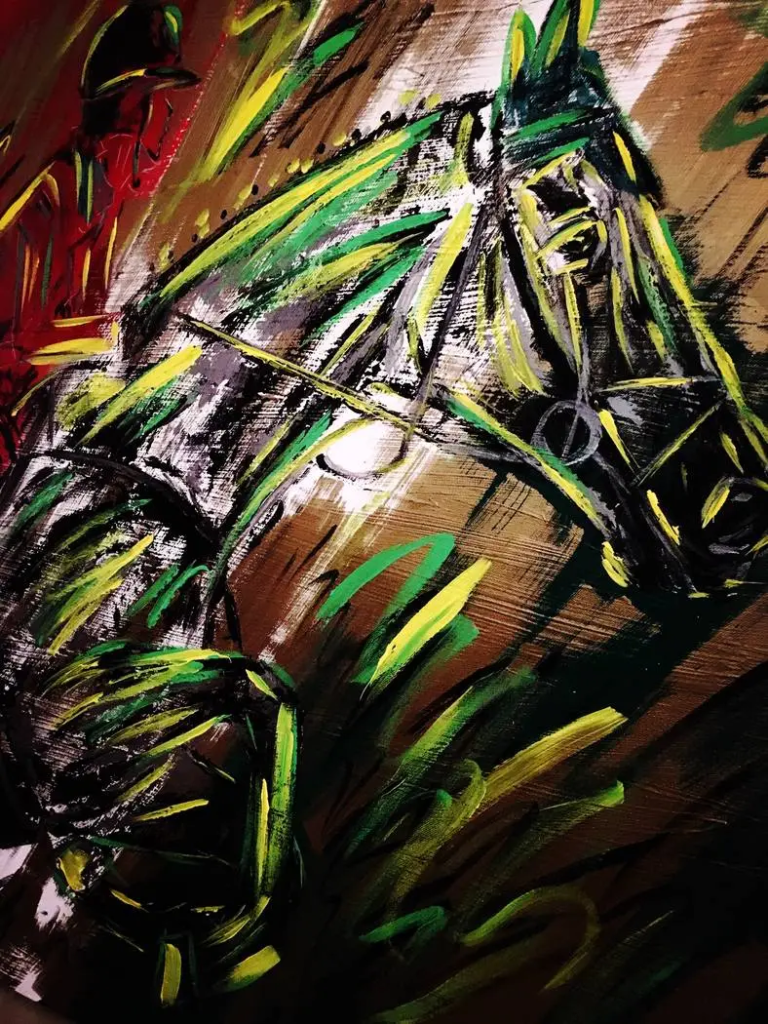


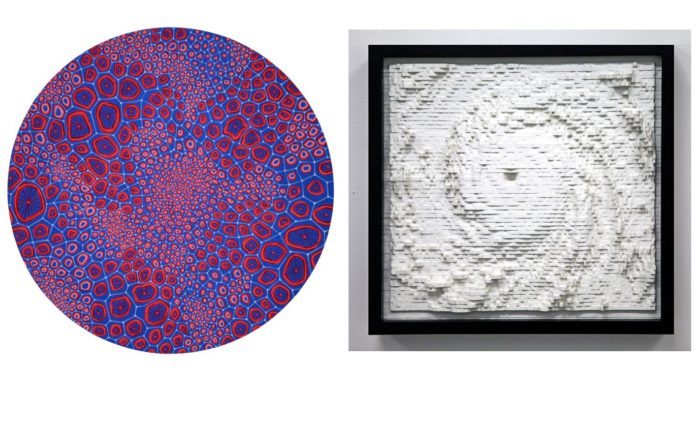
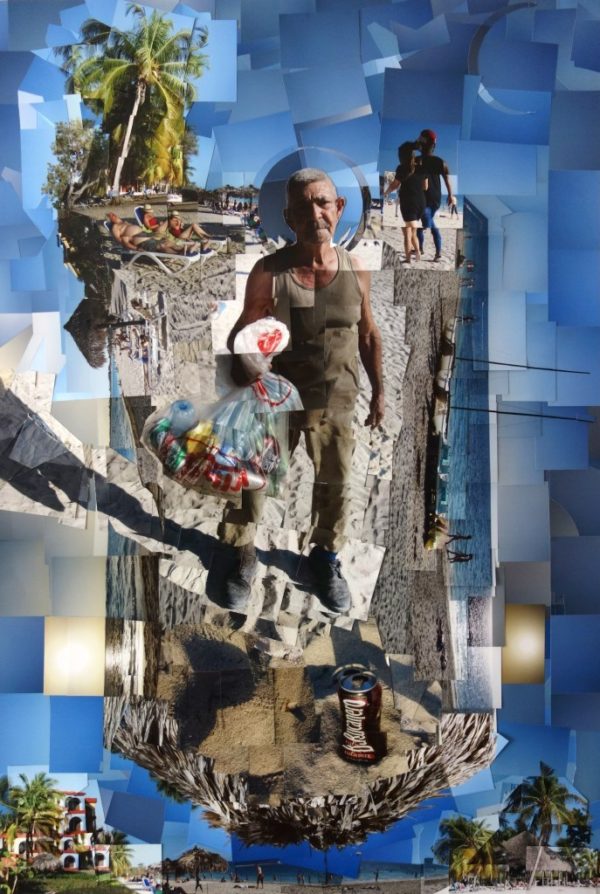

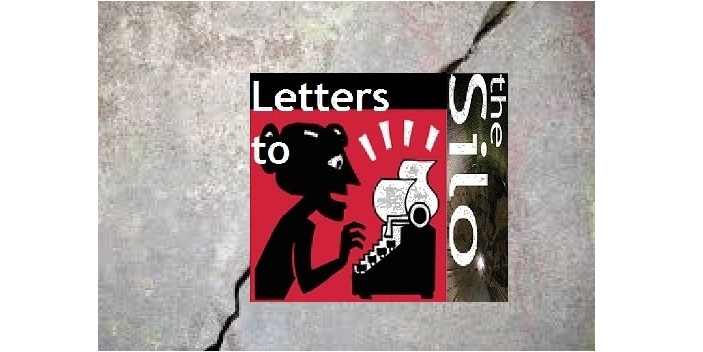
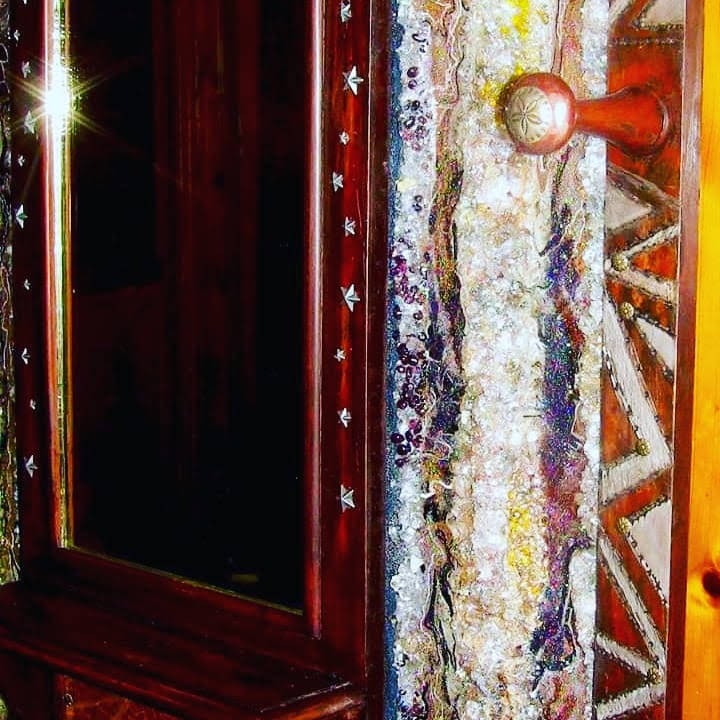
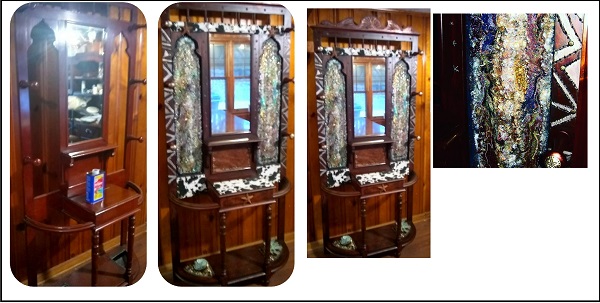
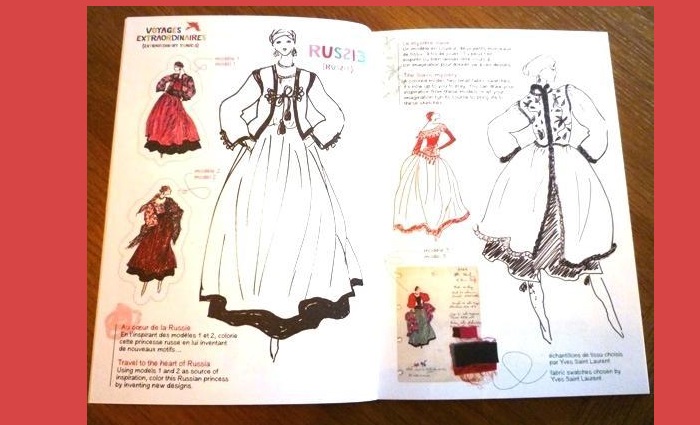
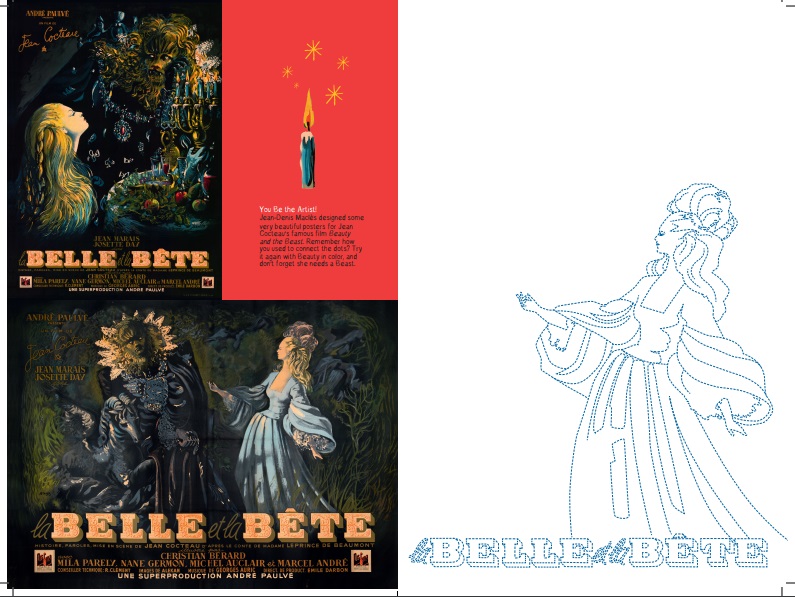
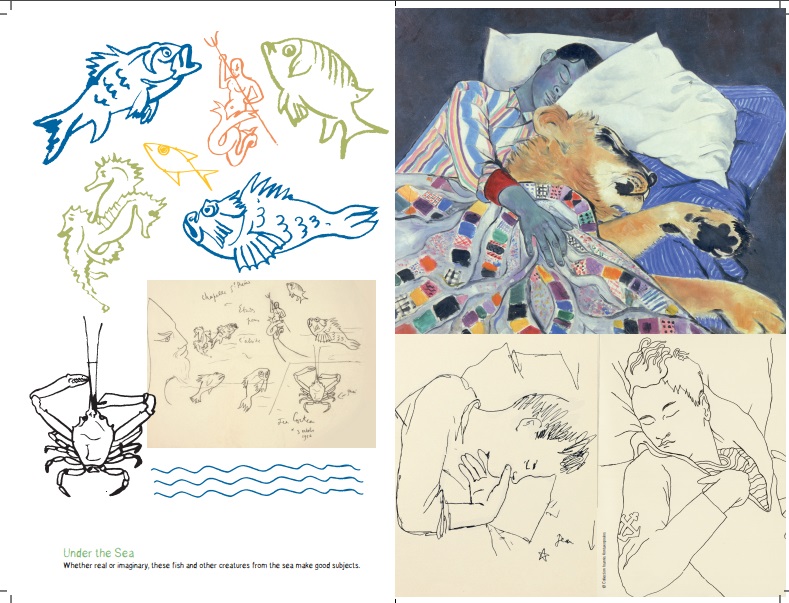
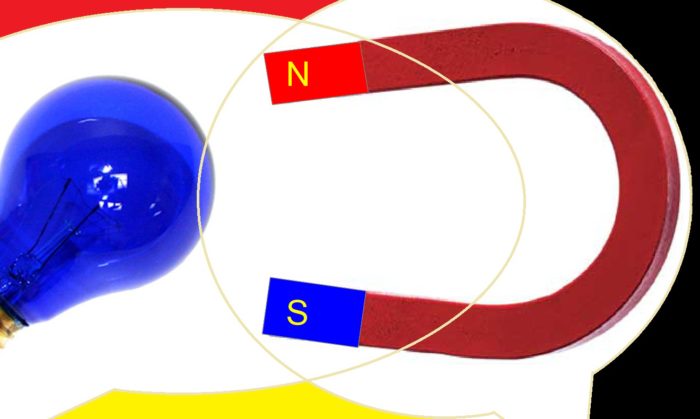
 This concern, of course, is not unique and strikes at the heart of something that all those in creative professions fear and must face. The ownership of ideas is difficult to prove. If you tell someone your plan in confidence and they, in turn, use it for their own purposes, there is very little you can do to show that you are the originator. Spreading this rumor is likely to make you look like the bad guy. It’s no wonder that this sort of generosity is cause for concern.
This concern, of course, is not unique and strikes at the heart of something that all those in creative professions fear and must face. The ownership of ideas is difficult to prove. If you tell someone your plan in confidence and they, in turn, use it for their own purposes, there is very little you can do to show that you are the originator. Spreading this rumor is likely to make you look like the bad guy. It’s no wonder that this sort of generosity is cause for concern. But what about sharing your networks or some trade secrets that helped you get to where you are today? While you may have worked tooth and nail for everything you’ve gained, there were surely people along the way who said yes at the right moment and assisted your progress. No one can ask more than this, and as an artist of a certain standing, there is nothing wrong with offering this sort of help.
But what about sharing your networks or some trade secrets that helped you get to where you are today? While you may have worked tooth and nail for everything you’ve gained, there were surely people along the way who said yes at the right moment and assisted your progress. No one can ask more than this, and as an artist of a certain standing, there is nothing wrong with offering this sort of help. No one exists in a vacuum. Even you, who may have scraped and fought your way to where you are today, benefited from the acceptance and help of others. Sure, you may have pounded the pavement endlessly in order to secure your position but that is no reason not to pay forward the success you have achieved. It is too easy to forget, once you have achieved a certain status, the myriad small moments that led you there. While it may seem as though hardly anyone was out to help you in the early days, surely there were some, otherwise you could not be where you are today. Even if it was just a few gallerists who were finally willing to take a chance, there are always rungs of assistance in the ladder to every success, no matter how small.
No one exists in a vacuum. Even you, who may have scraped and fought your way to where you are today, benefited from the acceptance and help of others. Sure, you may have pounded the pavement endlessly in order to secure your position but that is no reason not to pay forward the success you have achieved. It is too easy to forget, once you have achieved a certain status, the myriad small moments that led you there. While it may seem as though hardly anyone was out to help you in the early days, surely there were some, otherwise you could not be where you are today. Even if it was just a few gallerists who were finally willing to take a chance, there are always rungs of assistance in the ladder to every success, no matter how small. For these reasons, there is a lot to be said for good old-fashioned face-to-face interaction. Being the sort of artist who is willing to mentor in the real world sets you apart. Establishing this sort of reputation, for being the one who will gladly share the bounty you have created, seldom reverses one’s own success and frequently opens new doors you may never have considered.
For these reasons, there is a lot to be said for good old-fashioned face-to-face interaction. Being the sort of artist who is willing to mentor in the real world sets you apart. Establishing this sort of reputation, for being the one who will gladly share the bounty you have created, seldom reverses one’s own success and frequently opens new doors you may never have considered. Arguably, there is no such thing as original art. Even some of the most contemporary artists’ work is derivative of past creations. Marina Abramovic, in her unique style, has absolutely drawn from (and occasionally been accused of copying) works by other artists. Pablo Picasso (and perhaps more famously, Steve Jobs who quoted him) said, “good artists copy, great artists steal.” This doesn’t mean that you should open yourself up to idea theft, but it does mean that perhaps being stingy with your concepts, your network, your position as an established artist, doesn’t count for as much security as you might think. Be smart about things, but in general, it is always a good idea to reach down the ladder and help those coming up behind you find the next rung. For the Silo, Brainard Carey.
Arguably, there is no such thing as original art. Even some of the most contemporary artists’ work is derivative of past creations. Marina Abramovic, in her unique style, has absolutely drawn from (and occasionally been accused of copying) works by other artists. Pablo Picasso (and perhaps more famously, Steve Jobs who quoted him) said, “good artists copy, great artists steal.” This doesn’t mean that you should open yourself up to idea theft, but it does mean that perhaps being stingy with your concepts, your network, your position as an established artist, doesn’t count for as much security as you might think. Be smart about things, but in general, it is always a good idea to reach down the ladder and help those coming up behind you find the next rung. For the Silo, Brainard Carey.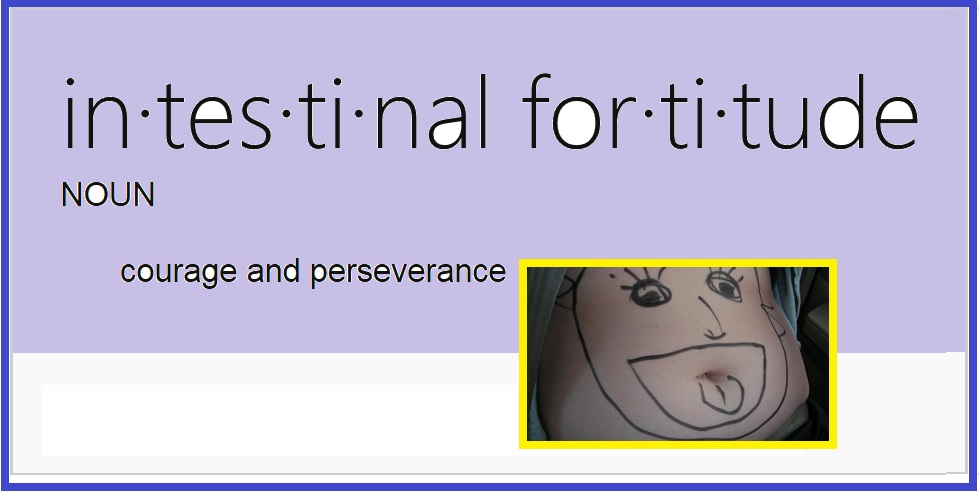
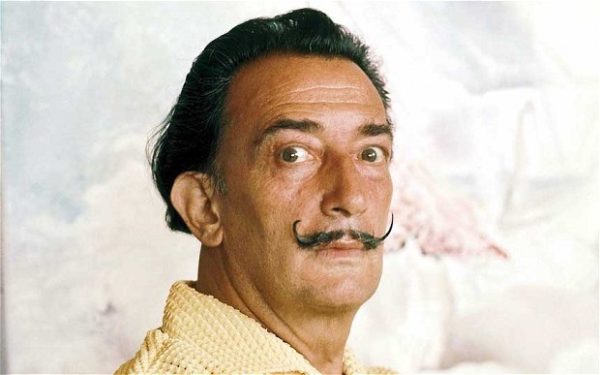

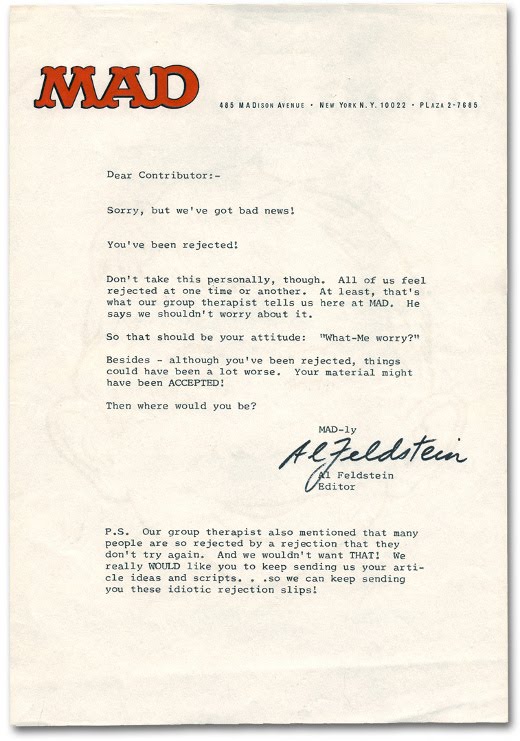 As an artist you will be the recipient of rejection letters and emails. Stacks of them. Count on it. In every creative field, there are piles and piles of rejections to be gone through. Walt Disney was once fired for what his editor deemed a lack of imagination. Countless famous artists throughout history were rejected in their lifetimes, some only achieving posthumous success. Van Gogh, Manet, Turner, they all have in common that they faced painful rejection in their lifetimes. They also have in common that they didn’t give up their unique perspective on the world nor did they allow something as insignificant as rejection stand in the way of their forward momentum.
As an artist you will be the recipient of rejection letters and emails. Stacks of them. Count on it. In every creative field, there are piles and piles of rejections to be gone through. Walt Disney was once fired for what his editor deemed a lack of imagination. Countless famous artists throughout history were rejected in their lifetimes, some only achieving posthumous success. Van Gogh, Manet, Turner, they all have in common that they faced painful rejection in their lifetimes. They also have in common that they didn’t give up their unique perspective on the world nor did they allow something as insignificant as rejection stand in the way of their forward momentum.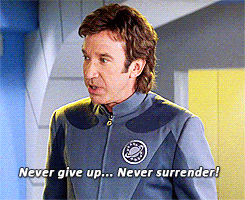
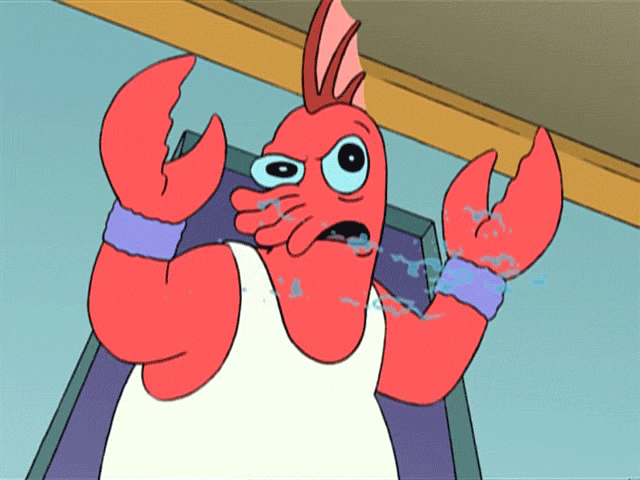
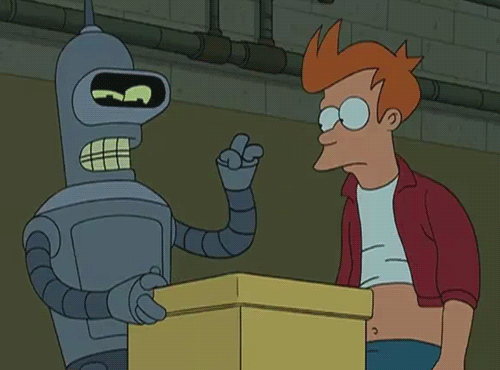
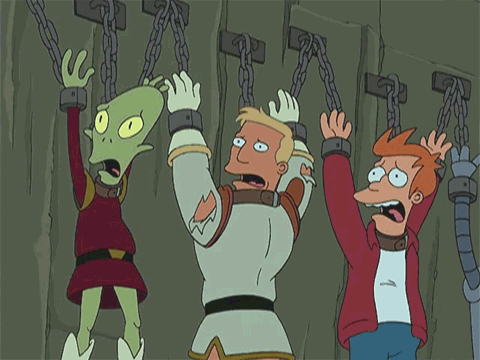
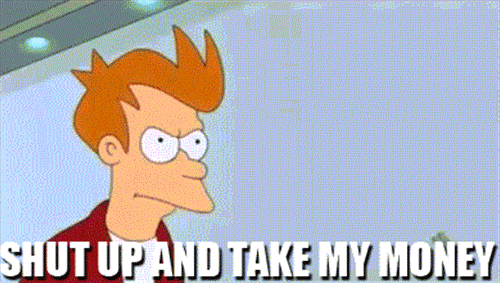
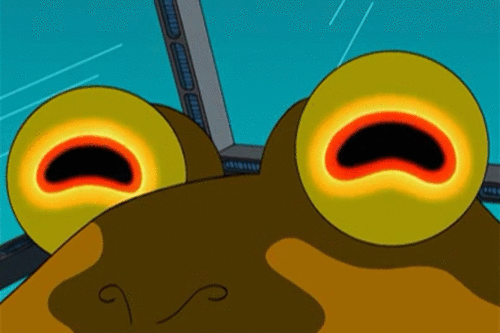
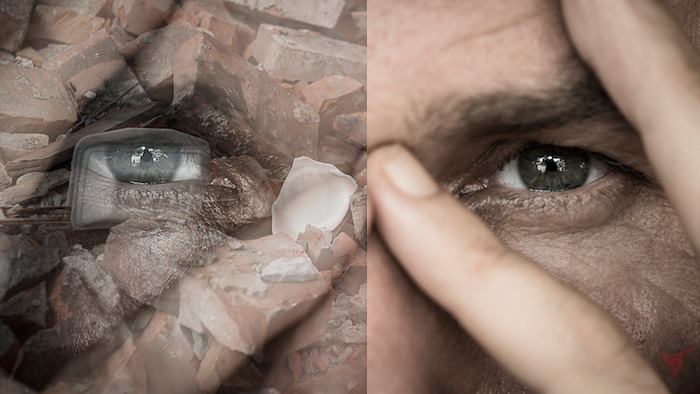
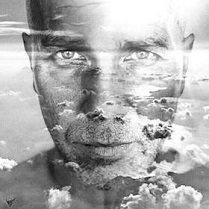 If you could choose just one photo exhibit to see all year, it would have to be
If you could choose just one photo exhibit to see all year, it would have to be 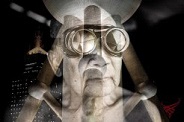
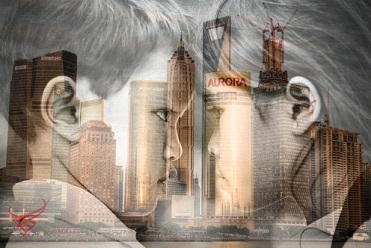
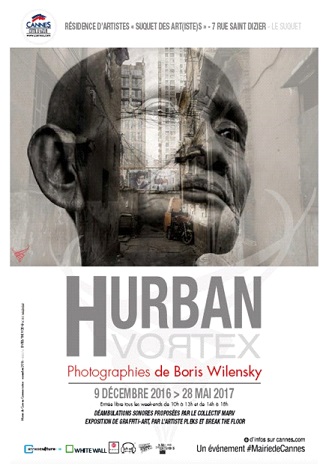
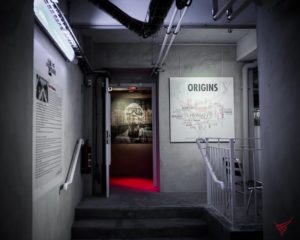 Over 15,000 photos later, Hurban Vortex sees the light of day. The ensemble of artistic, esthetic and human adventure are at the core of the triptych that represents his works: Origins corresponds to 2009 (present), the period of an oblivious, profligate, consumerism-driven world. Collapse takes us into 2011 (future)…Fukushima, with its worldwide impact. The glasses and gas masks worn by the humans represent the man-made destruction of a world as we had known it before and which will never be the same. And in Post we find ourselves in an urban landscape filled with waste and shattered ruins. But people are no longer wearing their blinders… Maybe there is hope after all that cities may disappear but humans are still around? Or does the urban jungle always win in the end? You decide, because it is your personal interpretation, after an intense dialogue with the image… exactly what Boris Wilensky wants.
Over 15,000 photos later, Hurban Vortex sees the light of day. The ensemble of artistic, esthetic and human adventure are at the core of the triptych that represents his works: Origins corresponds to 2009 (present), the period of an oblivious, profligate, consumerism-driven world. Collapse takes us into 2011 (future)…Fukushima, with its worldwide impact. The glasses and gas masks worn by the humans represent the man-made destruction of a world as we had known it before and which will never be the same. And in Post we find ourselves in an urban landscape filled with waste and shattered ruins. But people are no longer wearing their blinders… Maybe there is hope after all that cities may disappear but humans are still around? Or does the urban jungle always win in the end? You decide, because it is your personal interpretation, after an intense dialogue with the image… exactly what Boris Wilensky wants.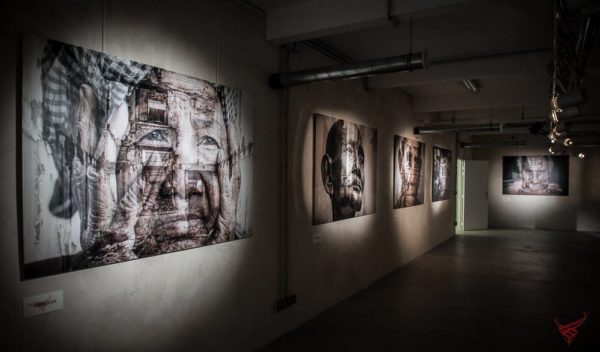 What the viewer sees, is how this artist sees the world – not in the literal but figurative sense. But he does not dictate, he suggests. He considers himself a storytelling portraitist first and foremost, and an urban photographer second. As you look at his large-size pictures (180 x 120 cm), the image in front of you transforms from a flat canvas to a three-dimensional scenography. You are drawn in, pulled onto a stage, you become part of the performance, an actor engaged in a dialogue. You are the person across from the man in the photo, but you also become him, turning outward to the viewer.
What the viewer sees, is how this artist sees the world – not in the literal but figurative sense. But he does not dictate, he suggests. He considers himself a storytelling portraitist first and foremost, and an urban photographer second. As you look at his large-size pictures (180 x 120 cm), the image in front of you transforms from a flat canvas to a three-dimensional scenography. You are drawn in, pulled onto a stage, you become part of the performance, an actor engaged in a dialogue. You are the person across from the man in the photo, but you also become him, turning outward to the viewer.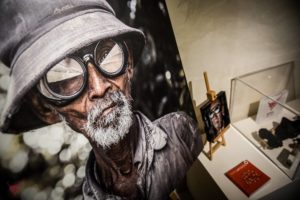 The continuous movement – the vortex – pushes and pulls you as the borders between Human and Urban blur and become Hurban. There are violently cold and anonymous city landscapes, consisting of monochromatic and starkly geometric patterns, entirely unlike anything you find in nature. But the human element, superimposed, invariably bestows them with a strangely appealing aesthetic. For the Silo,
The continuous movement – the vortex – pushes and pulls you as the borders between Human and Urban blur and become Hurban. There are violently cold and anonymous city landscapes, consisting of monochromatic and starkly geometric patterns, entirely unlike anything you find in nature. But the human element, superimposed, invariably bestows them with a strangely appealing aesthetic. For the Silo, 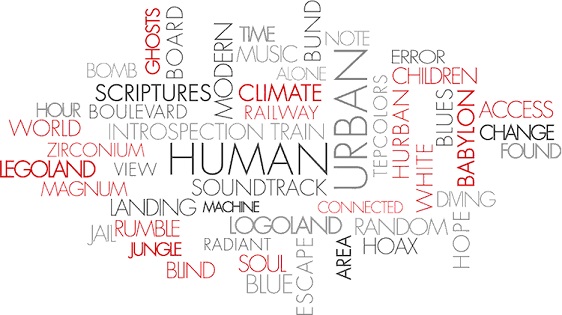
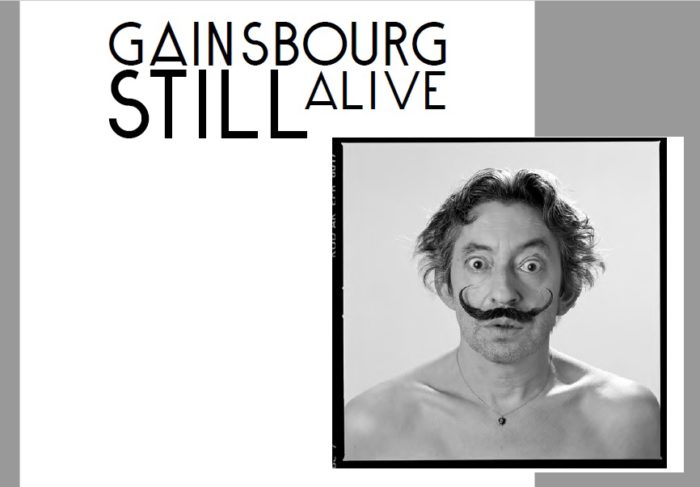

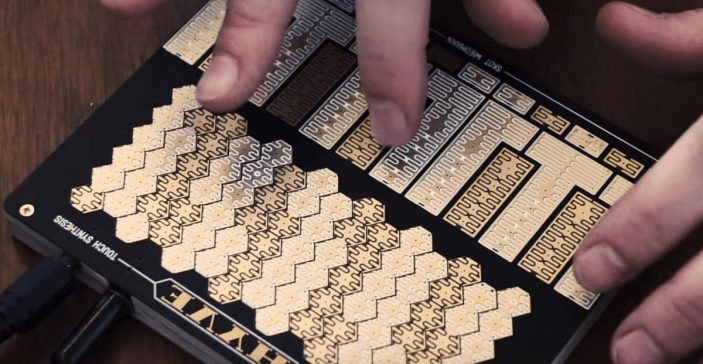
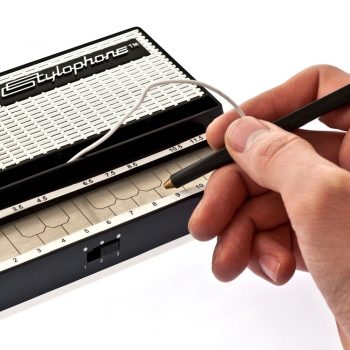 I yearned to use hardware/instruments again, but not being able to play an instrument is a definite hindrance
I yearned to use hardware/instruments again, but not being able to play an instrument is a definite hindrance  I searched for cheap keyboards on the net. I soon discovered the “Stylophone” and ordered one ‘sight unseen’. It was unique, inexpensive and fun, but quite limited in sound variety. I started mixing the Stylophone with app produced sounds/music, as well as other “found sounds”. (I really appreciate the functionality of software based mixing apps, which are almost essential to my creations these days). I then stumbled upon a couple of user videos of
I searched for cheap keyboards on the net. I soon discovered the “Stylophone” and ordered one ‘sight unseen’. It was unique, inexpensive and fun, but quite limited in sound variety. I started mixing the Stylophone with app produced sounds/music, as well as other “found sounds”. (I really appreciate the functionality of software based mixing apps, which are almost essential to my creations these days). I then stumbled upon a couple of user videos of 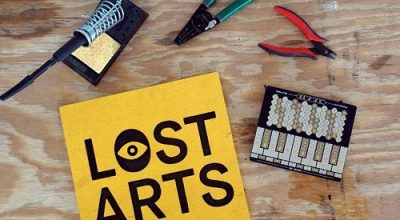 This presented a twofold opportunity. I could hopefully, meet Leslie face to face, and hopefully have a place to spend the night. I contacted Les and everything was A-OK! I purchased a ticket to build my Hyve, and started to plan my road trip. The workshop was going to be from Noon to 3pm, Saturday Sept.24 in a cool space called
This presented a twofold opportunity. I could hopefully, meet Leslie face to face, and hopefully have a place to spend the night. I contacted Les and everything was A-OK! I purchased a ticket to build my Hyve, and started to plan my road trip. The workshop was going to be from Noon to 3pm, Saturday Sept.24 in a cool space called